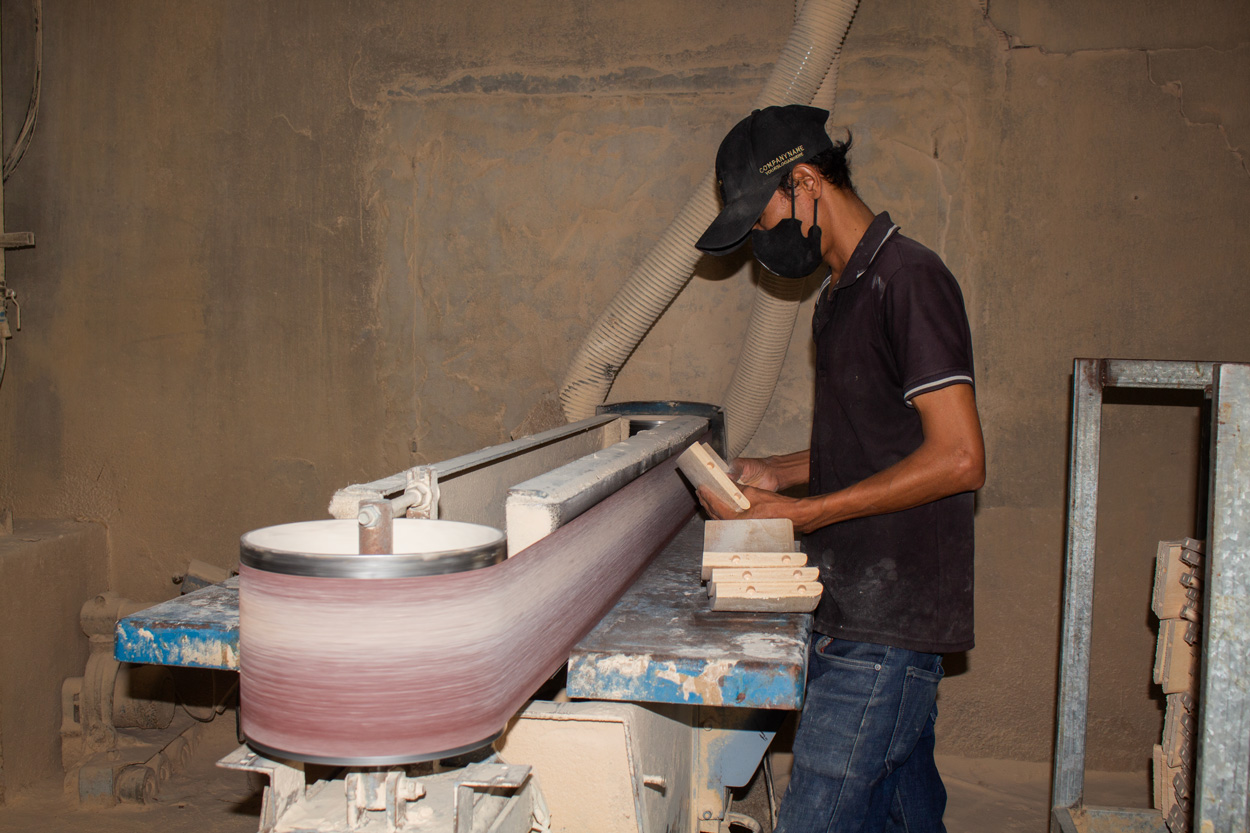Vietnam vs China Furniture Cost: Which Option Is the Most Optimal?
The vietnam vs china furniture cost is currently a crucial factor that many international businesses are closely monitoring. In this article, Aurora Craft will analyze costs related to raw materials, labor, logistics, and tariffs. Understanding vietnam vs china furniture cost is essential for global companies looking to balance quality, efficiency, and long-term competitiveness.
The “China+1” Strategy – When Vietnam Becomes an Attractive Destination for International Businesses
China was once hailed as the world’s “furniture factory,” dominating the global supply chain for over two decades. However, recent trade fluctuations and new tariff policies have compelled international corporations to rethink their investment strategies. This shift has made china+1 sourcing an increasingly essential approach.
The china+1 sourcing model allows companies to distribute production and capital outside China, reducing the risks of relying on a single market. In this context, Vietnam has emerged as a highly promising destination.
Vietnam benefits not only from a strategic location close to major Asian shipping routes but also from favorable free trade agreements. Alongside this, the country’s network of export-standard factories continues to expand, supported by a skilled workforce that rivals many facilities on the mainland.

These combined advantages have made vietnam vs china furniture cost more competitive than ever. The details of how production costs compare between Vietnam and China will be explored in the following sections, providing businesses with clear insights to inform their strategic decisions.
>>>Read more: Inside a Furniture Factory Vietnam: What Truly Makes It Stand Out.
Vietnam vs China Furniture Cost – Which Option Is More Optimal?
Cost of Raw Materials
Raw materials are a decisive factor affecting vietnam vs china furniture cost. China enjoys a strong domestic supply, particularly for engineered wood, metals, and related components. This well-established network helps reduce reliance on imports, although recent environmental regulations and limits on natural wood harvesting have increased raw material prices.
Vietnam, by contrast, still depends on roughly 70% imported materials, mainly solid wood from the US, EU, and ASEAN countries. This reliance makes production costs sensitive to global price fluctuations. However, Vietnam benefits from locally grown rubberwood and acacia, providing a stable and cost-effective alternative. Over time, manufacturers have also developed sourcing partnerships and invested in sustainable forestry to improve supply reliability.
Beyond wood, several Vietnamese manufacturers such as Aurora Craft have expanded their material portfolio to include more diverse and sustainable options. One notable example is Glass Fiber Reinforced Concrete (GFRC), which is increasingly used in furniture production. GFRC offers durability, weather resistance, and design flexibility, making it a strong alternative to traditional wood for both indoor and outdoor applications. By incorporating GFRC alongside wood, manufacturers reduce pressure on timber resources while creating innovative product lines that meet the growing demand for modern and eco friendly furniture.
Labor Costs
Labor cost remains a crucial variable when assessing vietnam vs china furniture cost. China was once renowned for its low-cost workforce, but this advantage has diminished significantly over the past decade. According to the National Bureau of Statistics of China, minimum wages in coastal provinces—where most furniture factories are located—have risen to USD 350–390 per month.
In comparison, Vietnam maintains a clear edge in labor costs for furniture manufacturing. According to VnExpress, Vietnam’s minimum monthly wage ranges from around US$133 to US$196, depending on the region, which is still significantly lower than wages in major Chinese industrial zones where minimum rates can exceed US$370. This cost differential continues to make Vietnam an attractive destination for international companies seeking competitive production expenses.
However, cost alone does not determine efficiency. China benefits from a highly experienced workforce, particularly skilled in complex furniture assembly and large-scale production. Vietnam is catching up quickly through vocational training programs and technical collaborations with global corporations, which are enhancing both craftsmanship and operational efficiency.

Another important factor is labor availability. China faces challenges from an aging population and shifts in workforce distribution, which create pressure on the manufacturing sector. Vietnam, by contrast, is in its demographic “golden period,” with a young, dynamic labor force ready to acquire new skills and adapt to modern production requirements.
Scale and Production Capacity
When evaluating vietnam vs china furniture cost, production scale and capacity are critical factors.
China continues to lead in both scale and operational capability. Large furniture factories in the country often span tens of thousands of square meters and are equipped with automated production lines, robotics, and advanced quality management systems. This setup enables rapid mass production while reducing the average cost per unit, a key factor in maintaining competitive pricing in global markets.
Vietnamese furniture factories, while not yet matching China in sheer scale, are making notable strides. Local manufacturers are focusing on optimizing capacity, offering flexible OEM/ODM production, and integrating modern technologies into crafting processes. This allows Vietnamese factories to handle customized orders efficiently while maintaining consistent quality.
Several Vietnamese export-standard factories, including Aurora Craft, can now fulfill orders ranging from a few hundred to several thousand units per month without compromising quality. In contrast, Chinese factories often prioritize high-volume production with limited design variation, which can be challenging for clients seeking specialized or bespoke products.
All of these factors have positioned Vietnam as a strategic destination for businesses looking to optimize their Vietnam furniture supply chain.
>>> Read more: OEM vs. ODM: Understanding the Difference in Furniture Manufacturing.
Manufacturing and Management Costs
When assessing furniture cost comparison, manufacturing overhead and management expenses play a crucial role in the overall production process.
In China, large-scale factories operate under complex management systems with multiple supervisory layers and strict quality control procedures. These operational structures inevitably drive up overhead costs. Moreover, the high-volume production lines often make order adjustments slower, which can lead to additional expenses if product designs are modified during the manufacturing process.
Conversely, many furniture workshops in Vietnam have embraced streamlined operational models. Maintenance and personnel management costs are generally 20–30% lower compared to Chinese factories. Vietnamese factories also demonstrate flexibility in scheduling production and allocating labor, significantly reducing the risk of inventory build-up or delivery delays.
Vietnam is actively enhancing warehouse automation and implementing ERP systems. These initiatives help minimize material loss, optimize storage space, and further reduce operational costs. The combination of lean management practices and technological adoption directly impacts vietnam vs china furniture cost, making Vietnamese production increasingly competitive.
Logistics Supply Chain
China has heavily invested in superior infrastructure, including ports, road networks, and warehouses. Major ports such as Shanghai, Shenzhen, and Guangzhou boast enormous handling capacities, allowing manufacturers to export products efficiently and at scale.
However, domestic transportation costs and ocean freight from China to the U.S. and EU have risen significantly in recent years. Port congestion and container shortages during peak seasons remain challenging issues for exporters.
Vietnam benefits from shorter transport distances compared to major Chinese ports. Key ports like Hai Phong, Cat Lai, and Da Nang are conveniently located near furniture production hubs, helping to reduce domestic shipping costs. However, when considering overall logistics costs, China still holds an advantage for exceptionally large orders.
In summary, the Vietnam vs China furniture cost gap in terms of logistics is gradually narrowing.

Impact of Tariffs and Trade Policies
Tariff policies create a significant divergence between the furniture markets of China and Vietnam. In China, exported furniture products to the U.S. and EU are subject to high anti-dumping duty furniture, ranging from 15% to 25%, depending on the product type, such as tables, chairs, or cabinets. These additional duties elevate production costs and influence the final export price.
In contrast, Vietnam benefits from free trade agreements such as EVFTA and CPTPP. As a result, Vietnamese furniture exports enjoy attractive preferential tariff rates. This advantage contributes to a more competitive FOB price furniture Vietnam, improving overall cost-efficiency compared to Chinese production.
From a strategic perspective, the differences in tariff structures and trade incentives underscore Vietnam’s advantage in the vietnam vs china furniture cost comparison. International companies can leverage these benefits not only to optimize export costs but also to enhance the global competitiveness of their products.
Tariff and trade policy considerations are now a key factor for businesses evaluating supply chain strategies. By incorporating Vietnam into their sourcing decisions, companies gain both financial efficiency and a strategic edge in international furniture markets.
Comparative Table of Furniture Production Costs Between Vietnam and China
After a detailed analysis of each factor, Aurora Craft has consolidated the insights into a clear comparative table. This provides international businesses with a straightforward view of vietnam vs china furniture cost.
| Category | Vietnam | China | Detailed Comparison |
| Raw Materials | Relies on around 70% imported materials, especially wood from the U.S., EU, and ASEAN, making product costs sensitive to supply fluctuations | Strong domestic supply, particularly in industrial wood and metals, reducing import dependence | Material prices are currently comparable between the two markets. China still has an advantage with a more diverse domestic supply |
| Labor | Average wages 20–30% lower than China, with medium–high production capability; skills are steadily improving | Higher wages, well-trained workforce, stable productivity | Vietnam offers lower labor cost Vietnam furniture, but productivity and quality are not yet at China’s level. However, flexibility and responsiveness to large orders are improving rapidly |
| Factory Scale & Capacity | Medium to large factories, flexible production, easy customization | Large factories with high capacity, stable scale, capable of fulfilling bulk orders | China excels in scale and capacity, while Vietnam compensates with flexible order fulfillment and high-quality output |
| Logistics & Management | Streamlined management system, lower operating costs, efficient warehouse control | Complex but rigorous management, multi-layered QC, higher operating costs | Depending on factory capability, logistics costs vary. Generally, operating costs in China are higher, while Vietnam benefits from leaner operations |
| Logistics Infrastructure | Strong government investment supports smooth export operations | Large ports and advanced logistics system, but longer transport distances and peak-season congestion | Vietnam’s geographic location offers advantages for exporting to the U.S. and EU. In contrast, China’s logistics are highly developed, optimizing cost and delivery speed |
| Tariffs & Trade Policies | Benefits from FTAs, reducing export costs | Chinese goods face high anti-dumping duty furniture and other trade pressures | Export advantages lean toward Vietnam, improving competitiveness in international markets |
Overall, this comparison shows that vietnam vs china furniture cost is shaped by more than just raw pricing. China continues to hold its position as the “world’s furniture factory” due to undeniable production strength.
Yet, for companies seeking high-quality factories and to reduce over-reliance on China, Vietnam emerges as a highly attractive destination. Flexible production capabilities, customization options, a stable Vietnam furniture supply chain, and trade incentives collectively position Vietnam as a strategic partner for international businesses.
>>> Read more: Aurora Craft: Cost Savings with Furniture from Manufacturer in Vietnam.
Conclusion
Through the detailed analysis of vietnam vs china furniture cost, Aurora Craft hopes that international businesses now have a comprehensive and realistic view of the furniture production landscape in both countries. This insight can help companies make informed decisions when choosing strategic manufacturing partners that best fit their specific needs. In conclusion, vietnam vs china furniture cost will remain a decisive factor shaping global sourcing strategies in the years to come.
About Aurora Craft – High-Capacity Furniture Manufacturer in Vietnam
Aurora Craft is a leading and trusted furniture manufacturer in Vietnam, with over 15 years of experience providing high-quality solutions to the international market. Our facility spans more than 10,000 m², with a maximum capacity of 60 containers per month, allowing us to efficiently accommodate large orders.
Aurora Craft specializes in producing furniture from GFRC (Glass Fiber Reinforced Concrete) and premium wood, catering to diverse spaces and market segments according to client requirements.
For businesses seeking a reliable furniture manufacturing partner in Vietnam, contact us today. Aurora Craft is ready to accompany you on the path toward sustainable furniture development while optimizing long-term costs.




